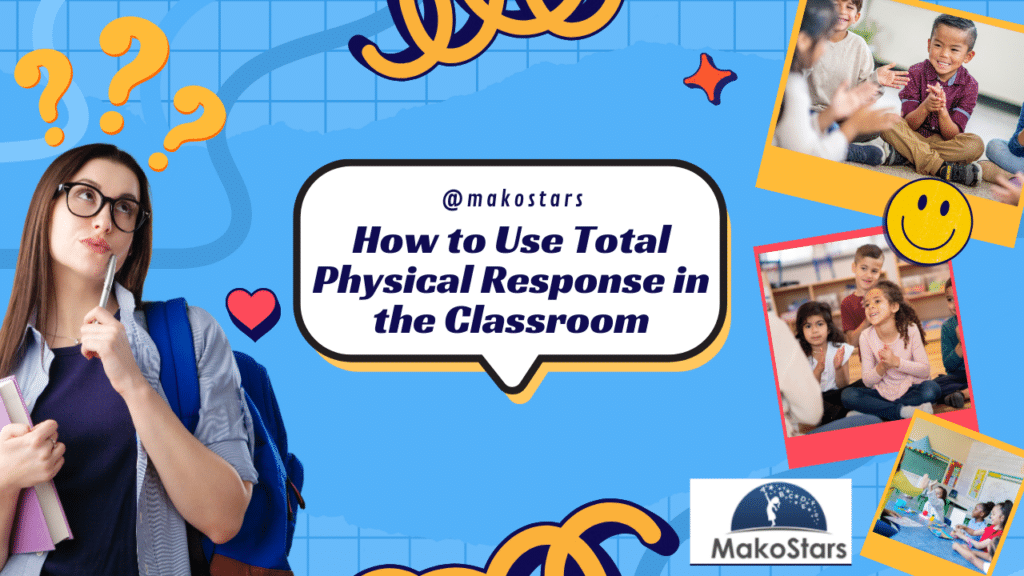Peer assisted learning strategies are powerful tools to boost student engagement and improve language skills in ESL classrooms. These cooperative learning techniques tap into the benefits of student-to-student interaction, creating a more dynamic and supportive learning environment.
In this guide, you’ll discover how to select and implement effective peer learning strategies for ESL instruction. You’ll learn about creating cooperative learning groups, designing engaging collaborative activities, and addressing common challenges that may arise.
By the end, you’ll have practical ideas to transform your ESL classroom into a hub of interactive, student-centered learning that promotes both language development and cross-cultural understanding.

Table of Contents
Selecting Appropriate Peer Learning Strategies for ESL
When implementing peer assisted learning strategies in ESL classrooms, it’s crucial to choose methods that suit your students’ needs and learning objectives. By carefully selecting cooperative learning techniques, you can boost student engagement and create a more dynamic learning environment.
Age and proficiency level considerations
When choosing peer learning strategies, consider your students’ age and English proficiency levels. For younger learners, like kindergarteners, stick to simple routines that are easy to follow. Older elementary students can handle more complex cooperative learning activities, such as providing feedback on comprehension and vocabulary.
To match strategies with proficiency levels, assign group roles that align with students’ language abilities. As their skills improve, promote them to new roles that challenge them further. This approach allows all students to participate actively and benefit from peer interaction.
Cultural sensitivity in strategy selection
Be mindful of cultural differences when selecting peer assisted learning strategies. Students from diverse backgrounds may have varying comfort levels with group work and collaborative activities.
To create an inclusive environment, make sure all students understand they’ll be working in diverse groups and that everyone’s contributions are valuable. Encourage empathy and respect among peers by highlighting the benefits of bilingualism and cultural exchange.
Aligning with learning objectives
When choosing peer learning strategies, align them with your specific learning objectives. Focus on areas that emerge as key targets from your district’s evaluation data, such as oral reading fluency, vocabulary development, syntax, or comprehension strategies.
For example, if your goal is to improve reading comprehension, you might use reciprocal teaching or peer-assisted learning strategies where students work in pairs to practice summarizing texts or generating questions about what they’ve read. These cooperative learning examples can help students develop critical thinking skills while supporting language acquisition.
To effectively implement peer assisted learning strategies, schedule about 90 minutes per week for structured pair activities in reading and language arts. This approach allows students to practice and extend what you’ve taught during regular instruction, reinforcing their learning through collaborative activities.
Remember, peer-assisted learning is not a substitute for teacher-led instruction. Instead, it’s a way to replace some independent seatwork or round-robin reading with more engaging, cooperative learning activities. By carefully selecting and implementing these strategies, you can create a supportive learning environment that promotes both language development and academic growth for your ESL students.

Implementing Collaborative Language Practice
Peer assisted learning strategies are powerful tools to boost student engagement and improve language skills in ESL classrooms. By implementing collaborative activities, you can create a dynamic learning environment that promotes both language development and cross-cultural understanding.
Oral language development activities
To enhance oral language skills, incorporate cooperative learning activities that encourage students to practice speaking in a supportive environment. One effective approach is to use the “Two Truths, One Lie” game. In this activity, each student writes three statements about themselves, two true and one false. Their classmates then question them to determine which statement is a lie. This game promotes speaking practice and helps students get to know each other better, fostering a sense of community in the classroom.
Another engaging activity is “Who’s Telling the Truth?” Bring three students to the front of the room and read aloud a true fact for one of them. All three claim the fact is theirs, and the class questions them to figure out who is telling the truth. This exercise encourages critical thinking and improves questioning skills in a fun, interactive way.

Reading comprehension exercises
Cooperative learning strategies can also enhance reading comprehension skills. One effective technique is jigsaw reading. Divide students into groups and assign each member a different section of a text to read. Students then take turns explaining their section to their group members, encouraging them to summarize and explain the content in their own words. This activity not only improves reading comprehension but also develops speaking and listening skills.
Another useful strategy is partner reading. Pair students of different ability levels and have them take turns reading aloud to each other. The listener can provide feedback and ask questions, helping to improve both students’ comprehension and fluency. This peer-assisted learning approach allows students to support each other’s learning while practicing important language skills.
Writing workshops
Collaborative writing activities can significantly improve students’ writing skills. Implement peer review sessions where students exchange their written work and provide constructive feedback to each other. To make this process more engaging, try the “write a letter to your friend” activity. Students read their peer’s essay and write a letter providing feedback on the content and organization. T
his personalized approach helps students engage more deeply with their classmates’ work and practice giving constructive criticism in a friendly manner.
Another effective writing workshop activity is collaborative storytelling. Bring four students to the front of the class, with three sitting in a row and one acting as a controller. The controller gives each seated student a card with a noun written on it. The first student starts telling a story incorporating their noun, and the controller decides when to switch to the next student, who must continue the story using their noun. This activity encourages creativity, improves vocabulary, and develops narrative skills in a fun, cooperative setting.
By incorporating these peer assisted learning strategies into your ESL classroom, you can create a more engaging and interactive learning environment. These cooperative learning activities not only improve language skills but also foster a sense of community and collaboration among your students.

Addressing Common Challenges in ESL Peer Learning
Implementing peer assisted learning strategies in ESL classrooms can be highly effective, but it also comes with its own set of challenges. By addressing these obstacles head-on, you can create a more supportive and engaging learning environment for your students.
Managing mixed-ability groups
One of the most common challenges in ESL peer learning is managing groups with varying language proficiency levels. To tackle this issue, you can use cooperative learning techniques that cater to different abilities. For instance, you might assign roles to students based on their language skills, promoting them to new roles as their abilities improve. This approach allows all students to participate actively and benefit from peer interaction.
When creating mixed-ability groups, it’s crucial to keep an eye on the balance of student participation. If you notice some students dominating the conversation, encourage them to find ways to involve their quieter peers. After group activities, ask students to reflect on their teamwork, helping them develop awareness of group dynamics and improve their collaborative skills.
Encouraging use of target language
Another challenge is getting students to use English consistently during peer interactions. To address this, you can implement strategies that promote target language use. For example, you might introduce key phrases and sentence frames that students can practice with lighter topics related to their daily routines or likes and dislikes. By using these frames regularly, students will become more comfortable expressing themselves in English.
It’s also important to create a supportive atmosphere where students feel safe taking risks with the language. Remind native English-speaking peers to be patient and supportive of their ESL classmates. You can also build empathy by highlighting the benefits of bilingualism or asking bilingual students to teach their peers a few words in their native language.
Balancing teacher guidance and student autonomy
Finding the right balance between providing guidance and fostering student independence can be tricky. While peer assisted learning strategies aim to promote autonomy, ESL learners still need support from their teachers, especially in areas like motivation, feedback, and metacognition.
To strike this balance, you can use a scaffolded approach. Start by providing clear instructions and modeling the peer learning activities. As students become more comfortable with the process, gradually reduce your direct involvement. This allows learners to develop their autonomy while still having access to support when needed.
Remember that culture can play a significant role in how students collaborate. Some students from collectivist cultures may excel in group work but need guidance on expectations for independent tasks. Use this cultural awareness to your advantage when designing cooperative learning activities and providing instructions for individual work.
By addressing these common challenges, you can make peer assisted learning strategies more effective in your ESL classroom. With thoughtful implementation and ongoing support, these cooperative learning techniques can significantly boost student engagement and language development.

Conclusion
Peer-assisted learning strategies have a profound impact on ESL classrooms, fostering a dynamic and supportive environment for language acquisition. By implementing collaborative activities, teachers can boost student engagement, improve language skills, and promote cross-cultural understanding. These strategies not only enhance academic performance but also help create a sense of community among students from diverse backgrounds.
To make the most of peer learning, it’s crucial to choose activities that suit your students’ needs and address common challenges. By managing mixed-ability groups, encouraging target language use, and striking a balance between guidance and autonomy, you can create a classroom where students feel empowered to learn from one another. In the end, peer-assisted learning strategies offer a powerful tool to transform ESL education, preparing students for success in an increasingly interconnected world.



